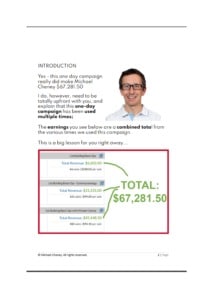Setting up an affiliate site as a beginner or small business owner is easier than you think. In this guide, we’ll walk you through the basic steps to get your affiliate site up and running in no time. We’ll show you how to choose a niche, set up your site, start producing content, find affiliate programmes to promote, and track your earnings. Before you know it, you’ll have a fully functioning money-making affiliate site. Even if you have zero experience, follow along and we’ll have you earning your first affiliate commissions in just a few weeks. Ready to get started? Let’s dive in!

Choosing the Right Affiliate Niche and Products
Choosing a profitable niche and affiliate products to promote is key to your success. Focus on an area you’re passionate about – it’ll be much easier to create content and connect with your audience.
Look for niches with high demand and low competition. Check Google Trends to see what’s popular and keyword tools to find low-competition search terms. Some evergreen niches include:
•Health and fitness. Products like workout gear, supplements and fitness trackers.
•Home and garden. Things such as home decor, gardening equipment, kitchenware.
•Tech and gadgets. Laptops, phones, headphones and other electronic devices.
•Finance. Services such as insurance, investing platforms, banking, tax software.
•Travel. Accommodation, tours, luggage – opportunities for affiliate links and ads.
Once you’ve found a niche, search for relevant affiliate programmes and products to promote. Look for trusted brands that offer a good commission rate, quality products and marketing materials.
Promote products that you’d genuinely recommend to friends and family. Be authentic – your audience will see through disingenuous recommendations and it will damage your credibility.
With an attractive niche, in-demand products and an authentic approach, you’ll be well on your way to success as an affiliate. Keep optimising and diversifying revenue streams and the money will follow! Focus on value, build trust and stay dedicated – you’ve got this!

If you’ve been struggling online this report will open your eyes.
Affiliate Marketing for Bloggers: Make money from your Blog(Opens in a new browser tab)
Important Things to Consider When Setting Up Your Affiliate Website
When setting up your affiliate website, there are a few important things to consider.
First, choose a niche market and product focus. Do you want to promote digital products like ebooks, online courses and software? Or physical products from major retailers? Finding a specific niche will make it easier to target your audience and become an authority in your field.
Content is king
Having high quality, helpful content is the key to success. You need to give visitors a reason to come to your site and the value to keep them there. Focus on in-depth blog posts, video tutorials, product reviews and comparisons. Provide real value and your readers will trust your recommendations.
A user-friendly website
Your website should be clean, simple to navigate and mobile-friendly. Use eye-catching images, headers and short paragraphs to make the content skimmable. Include easy to spot affiliate links so people can purchase the products you recommend.
Build your email list
An email list allows you to market to your subscribers on an ongoing basis. Offer a lead magnet like a free resource guide or toolkit in exchange for their email. Send regular newsletters highlighting new blog posts, product updates and deals. Your subscribers will become your most loyal customers.
Promote on social media
Build your social media profiles and join relevant Facebook groups and LinkedIn communities. Share your content and product recommendations, engage with followers and run social media contests and giveaways. Collaborate with other influencers for cross-promotion. Social media marketing will drive more traffic to your site and increase your affiliate sales.
With the right approach, you can build a successful affiliate website that generates an ongoing source of passive income. But remember, it takes time and consistency, so start today!

Optimising Your Affiliate Website for SEO
Optimising your affiliate website for search engine optimization (SEO) is key to driving organic traffic and increasing commissions. Focus on the following areas:
Keywords
Choose relevant keywords and phrases for your content that people are actually searching for. Use free tools like Google Keyword Planner, Moz Keywords Explorer or SEMrush to find keywords with high search volume and low competition.
Incorporate these keywords naturally into your page titles, headers, content and image alt text. Having a primary keyword appear in the page title, URL and first header helps search engines determine the topic of your page. Just don’t overdo it, as that can hurt your ranking.
Mobile-Friendly Design
With more and more people searching the web on their phones, having a mobile-friendly website is critical. Your site should display properly on mobile devices and be easy to navigate. Consider a responsive design that adapts to different screen sizes.
Fast Load Times
People have short attention spans, so fast load times are important. Compress images, minimise redirects, cache static content and remove any unused code to optimise page speed. Most search engines use page load time as a ranking factor.
Link Building
Earn high-quality backlinks from other authoritative websites to build trust and authority. Guest post on relevant blogs, comment on forums and reach out to sites linking to your competitors. Focus on earning a small number of high-value links rather than spamming many low-quality sites.
Blogging
A blog is one of the best ways to attract organic traffic to your website. Write posts around your target keywords, update frequently and promote your content on social media. Fresh, high-quality content will keep people coming back to your site, which search engines love.
Following these best practises for affiliate website optimization will get your site ranked higher in search results, leading to more traffic, clicks and conversions over time. Consistency and patience are key, so keep tweaking and improving your on-page SEO efforts month after month.

Become the Internet Marketing Millionaire’s Next Apprentice!!
How to Use Autoresponders for Effective Email Marketing(Opens in a new browser tab)
Driving Traffic to Your Affiliate Website
Once you have your affiliate website or blog set up, it’s time to drive traffic to it so you can start earning commissions. There are several effective ways to get visitors to your site.
Optimise for Search Engines
Make sure your website is optimised for search engines like Google so people can find you when searching for recommended products or services. Use keywords related to your niche throughout your content, page titles, and page URLs. The higher you rank in search results, the more traffic you’ll get.
Build Backlinks
Backlinks are links from other websites that point back to your site. They help boost your search engine ranking. You can get backlinks by guest posting on other blogs, getting featured on roundups or lists in your industry, and reaching out to sites with resource pages to ask if they’ll add a link to your site.
Promote on Social Media
Social media platforms like Facebook, Instagram, and Pinterest are great for driving traffic to your affiliate site. Post updates about new blog posts, product reviews, or sales. Engage with your followers by liking and commenting on their posts, and run contests and giveaways to increase shares and follows. You can also join relevant Facebook groups and promote your site there.
Start an Email List
Build an email list so you can stay in touch with your visitors and promote to them regularly. Offer a lead magnet like a free report, checklist or video in exchange for their email address. Send a welcome email introducing yourself and your site. Then send follow up emails with updates, deals, new posts, and product recommendations they might find helpful. Your email subscribers are more likely to make purchases through your affiliate links.
Collaborate with Other Bloggers
Reach out to bloggers in your industry and see if they’re open to collaborating. You can guest post on each other’s sites, interview each other, share each other’s content, or team up for a product giveaway. Collaborating is a great way to get exposure to new audiences and boost traffic. Just be sure any collaborations align with your site goals and brand.
With a consistent effort in these key areas, you’ll start generating more and more traffic to your affiliate website. Track your traffic and be sure to make changes as needed to keep improving your results. The more people that visit your site, the more you can earn through your affiliate promotions!
Monetizing Your Affiliate Website and Measuring Performance
Once you’ve got your affiliate website or blog up and running, it’s time to start making money from it. There are a few effective ways to monetize your site and track how well your affiliate links are performing.
Affiliate Links
The primary way to earn money with an affiliate website or blog is through affiliate links. Promote products and services that are related to your content and niche. When readers click an affiliate link and make a purchase, you’ll earn a commission. Monitor your affiliate links regularly to see which are generating the most clicks and sales. Focus your efforts on promoting those products and services.
Banner Ads
Many affiliate programmes offer banner ads to promote products. Place a few ads on your site, monitoring which get the highest click-through rates. Banner ads are an easy way to earn passive income from your site. However, don’t overcrowd your content with ads, as this can turn off readers.
Sponsored Posts
Approach brands related to your niche about writing sponsored posts. Explain your site traffic and metrics to set a competitive price. Sponsored posts are an excellent source of revenue, allowing you to earn money upfront while also promoting affiliate links and banner ads on the post. Make sure sponsored content still provides value to your readers.
Tracking Performance
Use affiliate tracking software like Awin or CJ Affiliate to monitor how well your affiliate links and ads are performing. Metrics like clicks, conversions, earnings, and commissions will tell you what’s working so you can optimise your monetization strategy. Many programmes provide real-time stats and reports to gain insights into your top earning links, demographics, and more.
Optimising how you monetize your site and frequently analysing performance is key to earning money as an affiliate. Try different methods, track what works, make changes, and repeat. With time and practise, you’ll develop a highly effective monetization strategy for your affiliate website or blog.